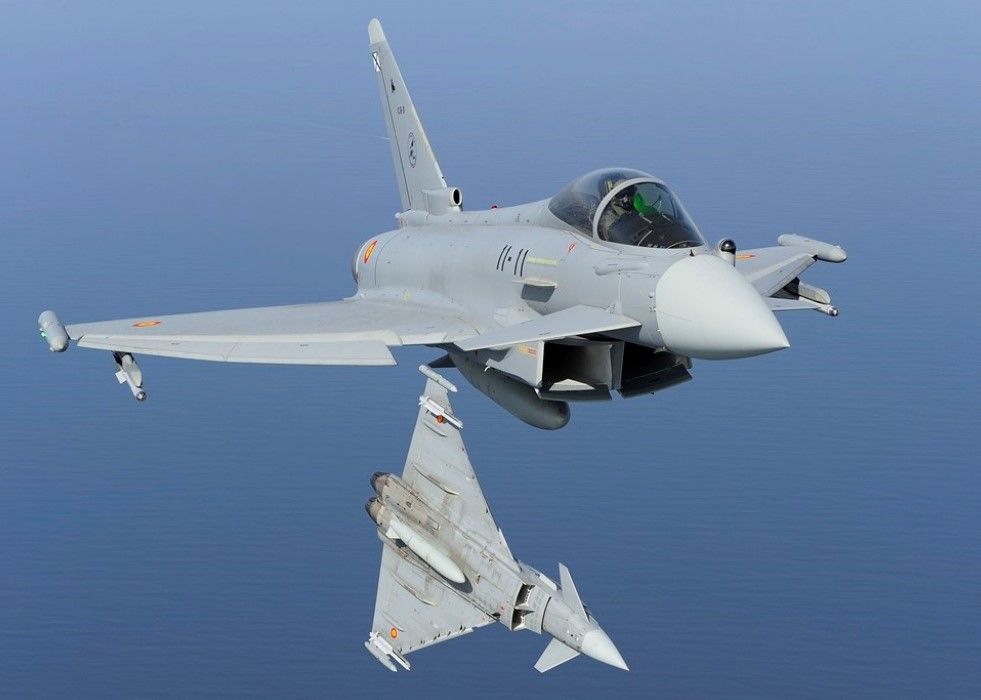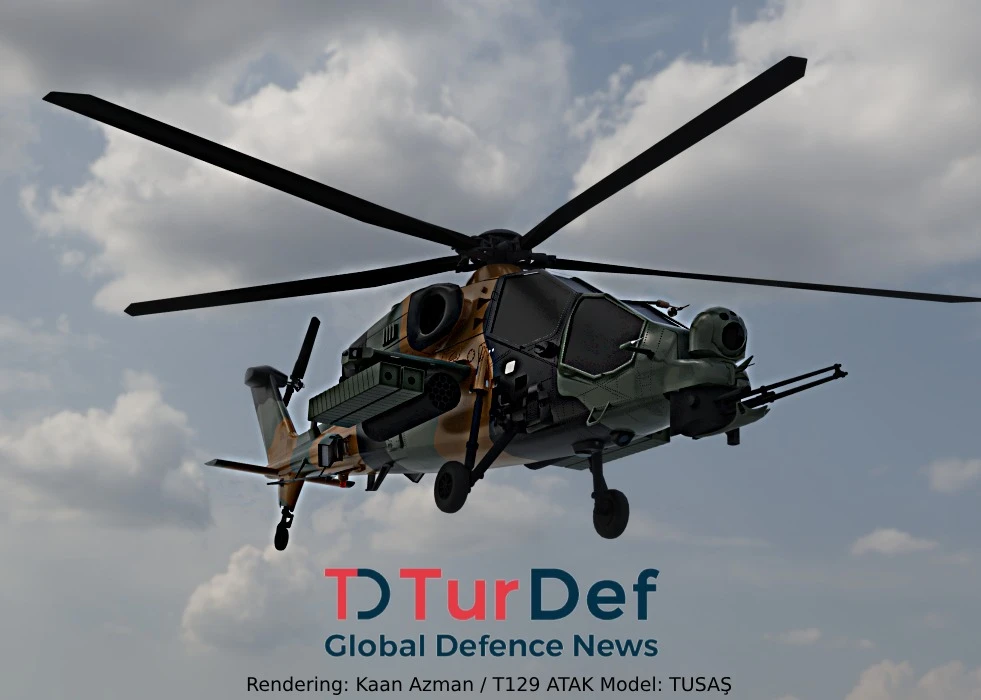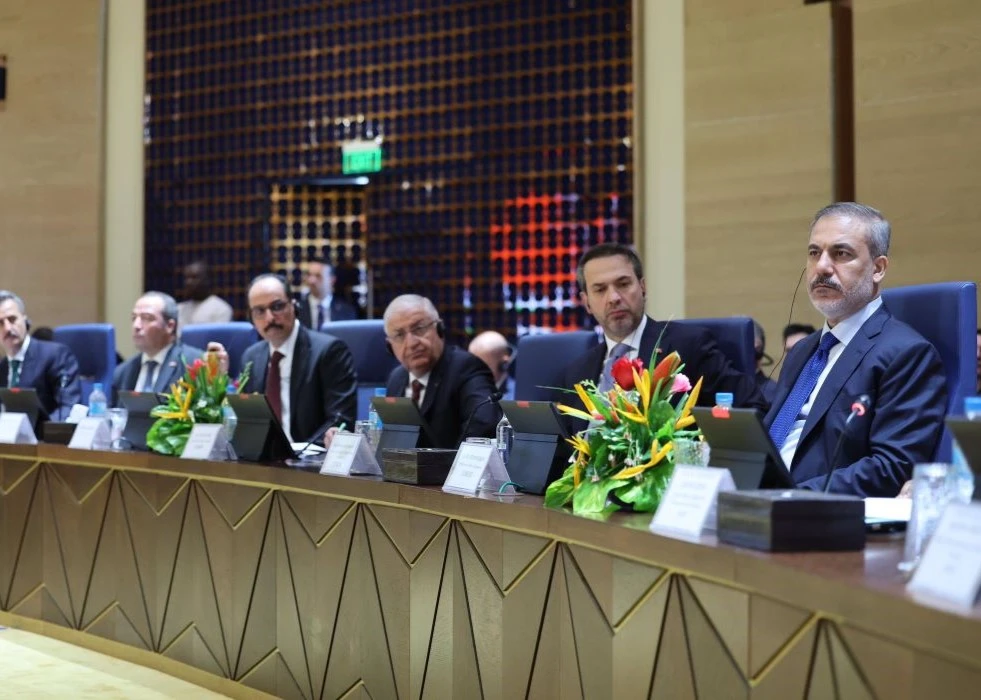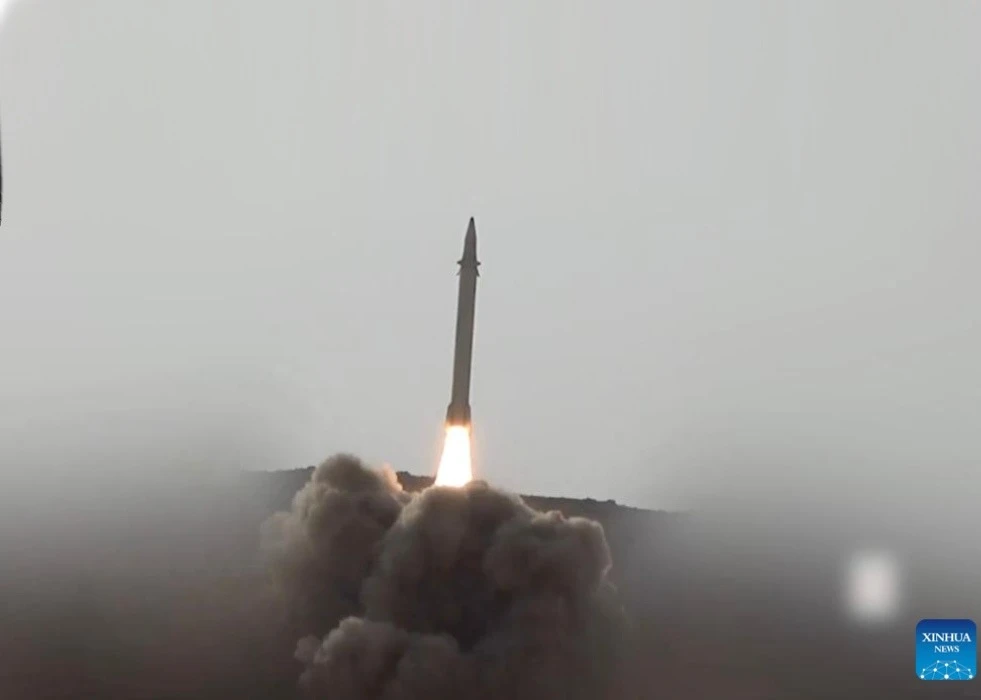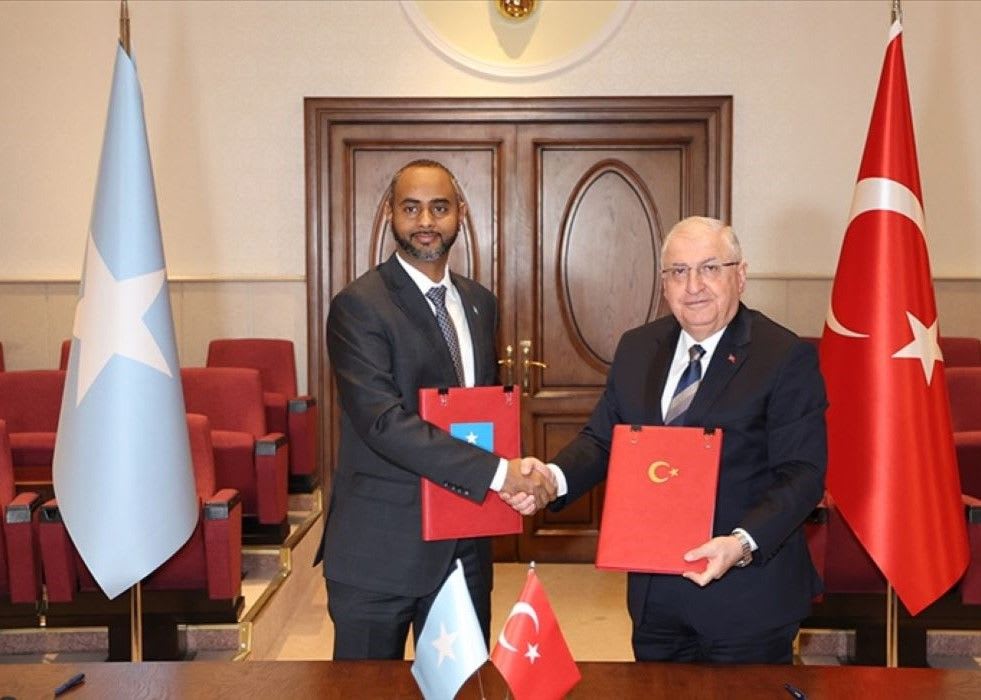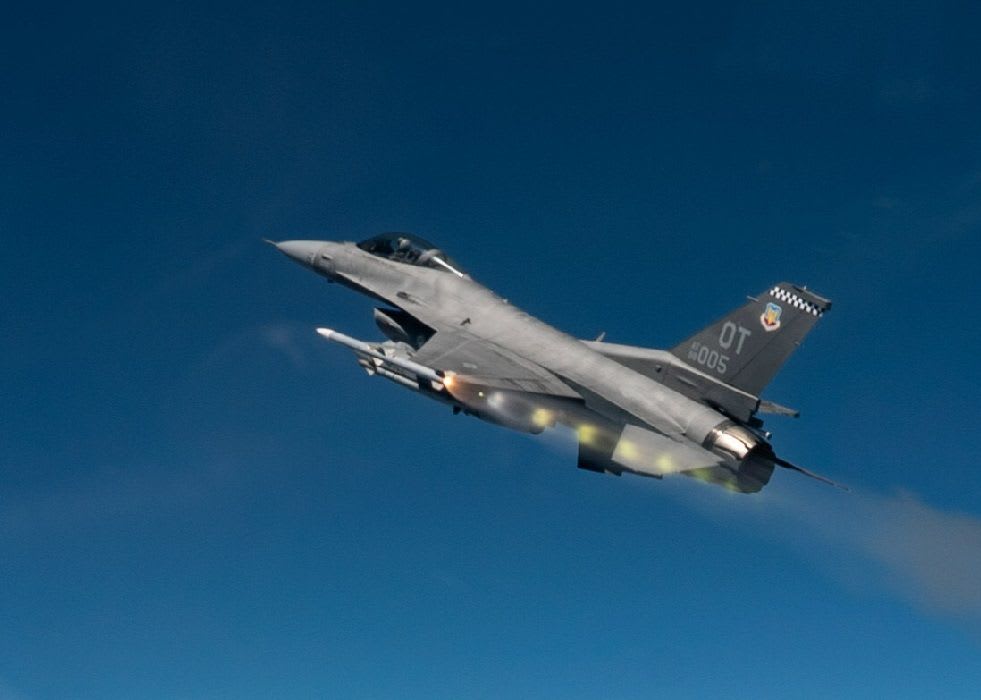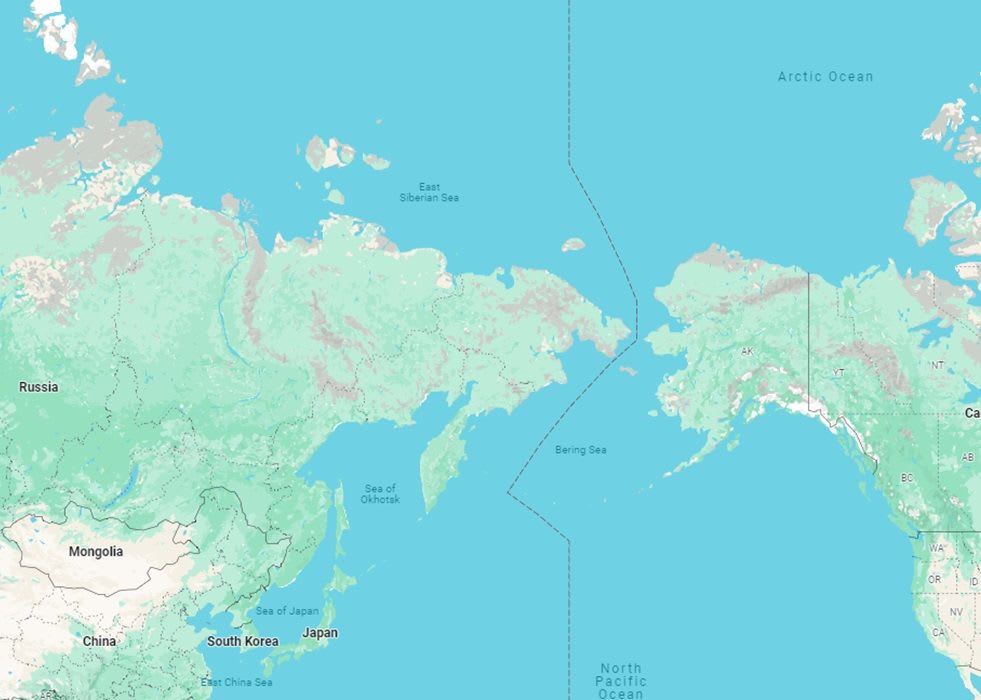By Özgür Ekşi / TurDef Editor in Chief
The Eurofighter Typhoon aircraft has been a focal point in Turkiye's recent defence discussions. The question of whether a procurement agreement will be signed for the Turkish Air Force to maintain its historical capacity in terms of quantity and quality of aircraft has been under consideration. Defence Minister Yaşar Güler's statement on this matter during the budget meeting at the Turkish Grand National Assembly unequivocally reflects Turkiye's intentions.
How Did We Reach This Point?
Following the deterioration of Turkiye's bilateral relations with Israel, Israel abandoned the potential V-22 procurement and turned its attention to the F-35. Israel became involved in a special rights procurement program for these aircraft shortly after. As Israel's presence in the program grew, questions arose about Turkiye's role within it. The significance of testing the stealth feature of the F-35 over Iran cannot be overstated in this context. Israel opposed Turkiye's acquiring this aircraft, considering it a threat. While it might be assumed that Turkiye did not receive the F-35 due to reaching the S-400, the imprisonment of Pastor Bronson on espionage charges, who was later released to acquire the F-35, contradicts this assumption. Similarly, India's purchase of a substantial amount of weapons from Israel, coupled with the U.S.'s willingness to sell F-35s to India despite its possession of the S-400, demonstrates that the situation is not as straightforward as presented.

Two NATO countries that withdrew from the alliance, France and Greece, allying with anti-Turkiye policies, constitute another aspect of the issue. There is a dispute between Turkiye and Greece over the 12-mile territorial waters in the Aegean Sea. Turkiye's "casus belli" declaration prevents this disagreement from becoming a war. Greece, unwilling to engage in a battle with Turkiye, awaits a moment when Turkiye cannot respond to implement its revisionist policies. This policy could be implemented, especially in the event of a vulnerability in the air forces. If Greece declares a 12-mile territorial waters border, the possibility of an inter-ally conflict that could end NATO might come to the fore. The trigger for this conflict would be the French Rafale aircraft acquired by Greece. Tension between the two countries could escalate when Greece acquires enough of these aircraft. While strengthening Turkiye's F-16 fleet may restore balance technically, it might not be enough to influence the outcome significantly. Therefore, Turkiye has opted for a policy change, separating F-16 procurement and modernization negotiations with the U.S. from Eurofighter negotiations with the United Kingdom.
Turkiye's Interest in Eurofighter:
Whether Turkiye procures F-16Vs from the U.S. or not, the desire to acquire Eurofighters persists. In fact, Turkiye has voluntarily taken on a mission to ensure peace at the southeastern tip of NATO. The breakdown of this alliance or Turkiye's exclusion from it entails strategic consequences that could significantly influence world geopolitics. For example, Turkiye and Russia being in the same alliance could fundamentally alter all balances in the Mediterranean, especially concerning Israel's security.
Getting to Know the Aircraft: European Air-to-Air Fighter Project
Originating in the early 1980s, the Eurofighter Typhoon project, a new-generation air-to-air fighter project, was initiated with the participation of Germany, France, the United Kingdom, Spain, and Italy. The process, during which France withdrew due to the development of an original system, was officially launched as the EFA Program in 1986. During the R&D process, in addition to the existing propulsion systems, a fully compatible engine was developed for the mission definition and capabilities of the aircraft. The end of the Cold War and changing threat definitions due to the collapse of the Soviet Union led to a re-evaluation. The plan for the aircraft to reach broad markets also fell through for various reasons. With the finalization of the design activities, the aircraft entered production as Eurofighter in 1997 and was offered to foreign markets the following year. Although it did not achieve the planned market success in its initial periods, the interest in Eurofighter increased with the valuable service life of many combat jet inventories ending in the new millennium.
Potential Models in the Possible Procurement Agreement:
Through a procurement agreement with the United Kingdom, with which it has a production partnership, the Turkish Air Force can ensure the purchase of any model it demands. However, to rapidly address existing issues, the direct purchase of aircraft from British hangars may also be considered in addition to or instead of acquiring zero jets. For this, it is necessary to look at the aircraft models in use by the United Kingdom.
Currently, the Royal Air Force has six Typhoon T3s. Additionally, 138 Typhoons are in service in the FGR4 configuration. It is known that the force retired many single and double-seater T1s in recent years due to logistical and maintenance issues, and these were considered for spare parts. Approximately 30 of these aircraft are known to be put in storage. According to information provided by Mark Goldsack, the Director of the Department for Business and Trade, U.K. Defence and Security Exports (UKDSE), in an interview with TurDef, Turkiye will not receive second-hand aircraft. In this case, the most likely option is the purchase of a new T3 aircraft, as the T4 aircraft did not enter service even in the Royal Air Force. (https://www.turdef.com/article/goldsack-focuses-on-opportunities-in-uk-turkish-relations )
Designations in the Royal Air Force:
The Royal Air Force is known to register its aircraft in its own system rather than using international designations. Tranche 1 model air-to-air interceptors are called Typhoon T1s, Tranche 2s are called Typhoon F2s, and Tranche 3 variants are called Typhoon T3s. Blocks 5 and 8, upgraded from Tranche 2 and directly purchased for inventory, are called Typhoon FGR4s.
Technical Specifications of the Aircraft:
Tranche 1:
Typhoon T1s, carrying air-to-air interceptor genes, have a length of 15.96 meters. The aircraft, with a canard delta wing structure, has a wingspan of 10.95 meters. The maximum take-off weight of the aircraft is 23,500 kilograms, and it can supercruise at a speed of 1.8 Mach. Powered by two EJ-200 after-burning turbofan engines, T1s can perform air-to-air missions within a radius of 750 nautical miles. The aircraft's service ceiling, which is adapted only for primary air defence missions, is around 55,000 feet. Equipped with the Captor-M radar, the aircraft can use the 27mm Mauser BK27 cannon, as well as AIM-9 Sidewinder, AIM-120 AMRAAM, AIM-132 ASRAAM, and IRIS-T air-to-air missiles. It is known that all T1s were upgraded to Block 5 under the R2 Program.
Typhoon F2:
Tranche 2 aircraft, called Typhoon F2, gained a significant feature by integrating a mission computer with an open architecture. The most important feature these aircraft gained with the T2 upgrade was the ability to conduct air-to-surface missions. T2s gained the capability to use laser-guided free-fall munitions such as GBU-24, as well as the ALARM, Paveway III and IV, Taurus, and Storm Shadow cruise missiles, along with Brimstone air-to-surface guided munitions. With the T2 upgrade, Typhoons' countermeasure capabilities were increased and features like IFF Mode 5 were added. Another significant achievement of Typhoons with this upgrade is the integration of the Rafael-produced LITENING targeting pod. This pod allows the aircraft to detect ground features and enables automatic flight at very low altitudes at a value the pilot determines when necessary. The strength of T2s in air-to-air missions was further reinforced with the addition of the Meteor long-range air-to-air missile to the weapon arsenal. The aircraft in the Royal Air Force gained Meteor, Storm Shadow, and Brimstone capabilities through the three-stage Project Centurion Program.
Typhoon FGR4:
The Royal Air Force decided to upgrade Typhoon T2s in its inventory to Tranche 3 level in 2018. Within this program, Block 5 and Block 8 single-seater Typhoons, which were improved and gained Litening III capability, were named FGR4s. In addition to the better weapon capabilities, the most significant difference between FGR4s, T1s, and F2s is the PIRATE infrared sensor located on the left side of the nose.
Typhoon T3:
The most advanced Typhoon model in the United Kingdom's inventory is the Tranche 3 variant Typhoon T3. The aircraft underwent structural modifications to increase range and performance for aerodynamic improvements, especially for control interfaces, CAPTOR-E AESA radar compatibility, and air-to-surface munition load. During these adjustments, the relevant areas of the aircraft underwent structural modifications.
Significance for the Turkish Air Force:
Currently, two crucial missile systems for Turkiye are Meteor and Brimstone II. The system, highlighted for changing the scale of air-to-air combat in the coming years, is strategically vital to the future of the Turkish Air Force due to its advanced guidance system, solid-fuel adjustable ramjet motor propulsion, and long-range. The ability of Brimstones used by the Royal Air Force in various operations to be carried by up to 18 on a Eurofighter Typhoon, in addition to air-to-air missiles, puts the aircraft in an excellent threat situation, especially in environments with asymmetric threats.
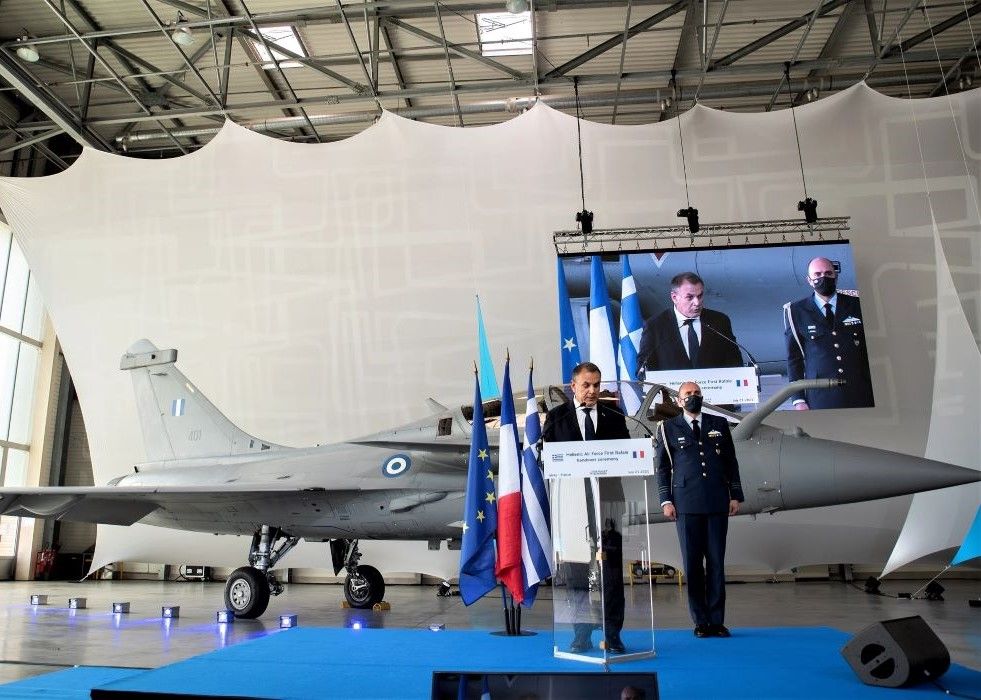
Challenges and Advantages in a Potential Conflict:
The altitude at which Greece's Rafale aircraft operate, the effective range of the air-to-air missiles they carry, and other criteria provide electronic warfare and weapon superiority against F-16s. The fact that these aircraft have lower readiness levels for war than F-16s and their numbers are limited suggests that they will take off at the beginning of a conflict and then withdraw for some time. The strategic advantage of these aircraft is further emphasized by their ability to launch long-range ramjet-powered air-to-air missiles like Meteor. This advantage becomes critical because the power multiplier for the Turkish Air Force, AWACS, and tanker aircraft have to operate well behind the front line to avoid becoming targets in the initial stages of a possible conflict. If the Turkish Air Force enters a war without Eurofighters, it must focus on avoiding losses until Rafales withdraw for maintenance. Once the Rafales withdraw, a counterattack should be launched. If Eurofighters are deployed, Rafale's air superiority is eliminated. According to an interview with an unnamed pilot from the Royal Air Force given to TurDef, Eurofighters defeat Rafales in a dogfight. (https://www.turdef.com/article/raf-aviator-typhoon-beats-rafale-at-dogfight )
(The next paper discusses the dog fight conditions to evaluate the Rafale / Eurofighter comparison.)
Conclusion:
In conclusion, the Eurofighter Typhoon is not just an aircraft; it represents a strategic shift in Turkiye's defence plans as it no longer establishes deep relations with the U.S. and does it with the United Kingdom. Pursuing Eurofighters signals a commitment to strengthening air capabilities, ensuring regional peace, and actively participating in international alliances. The ongoing discussions and negotiations surrounding the Eurofighter procurement underscore Turkiye's determination to secure a versatile and advanced air force capable of meeting the challenges of the evolving geopolitical landscape and providing peace within NATO Allies.
